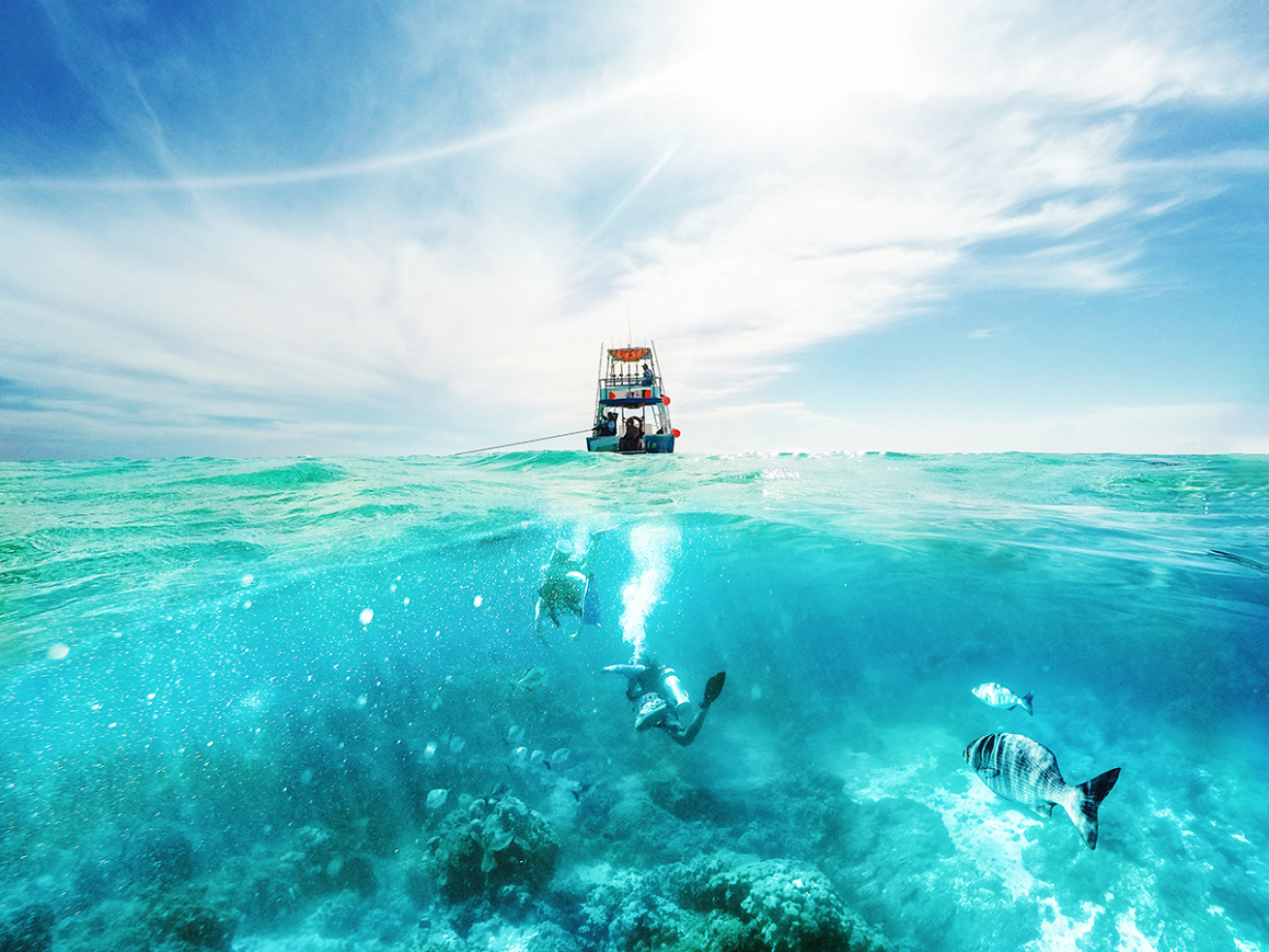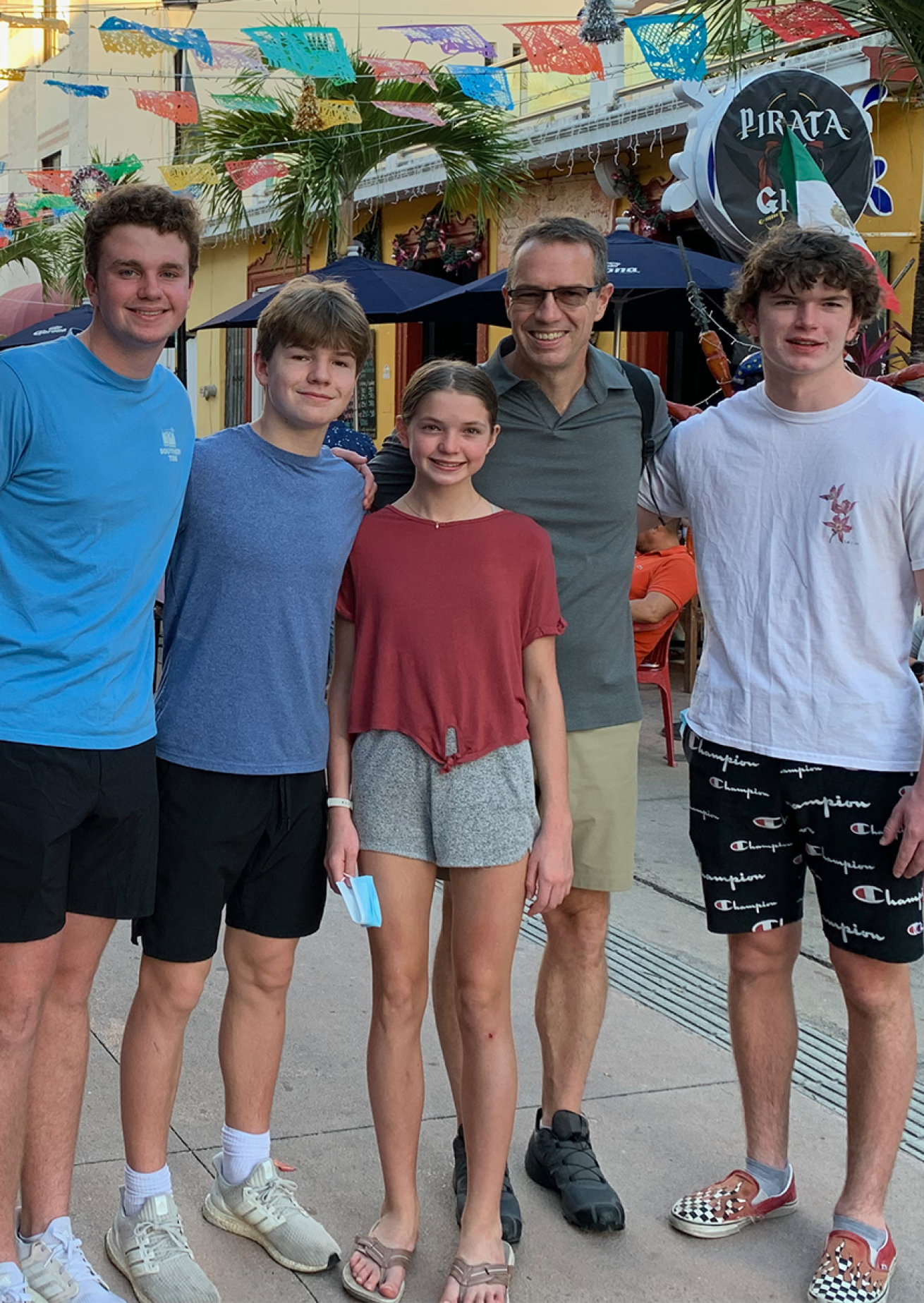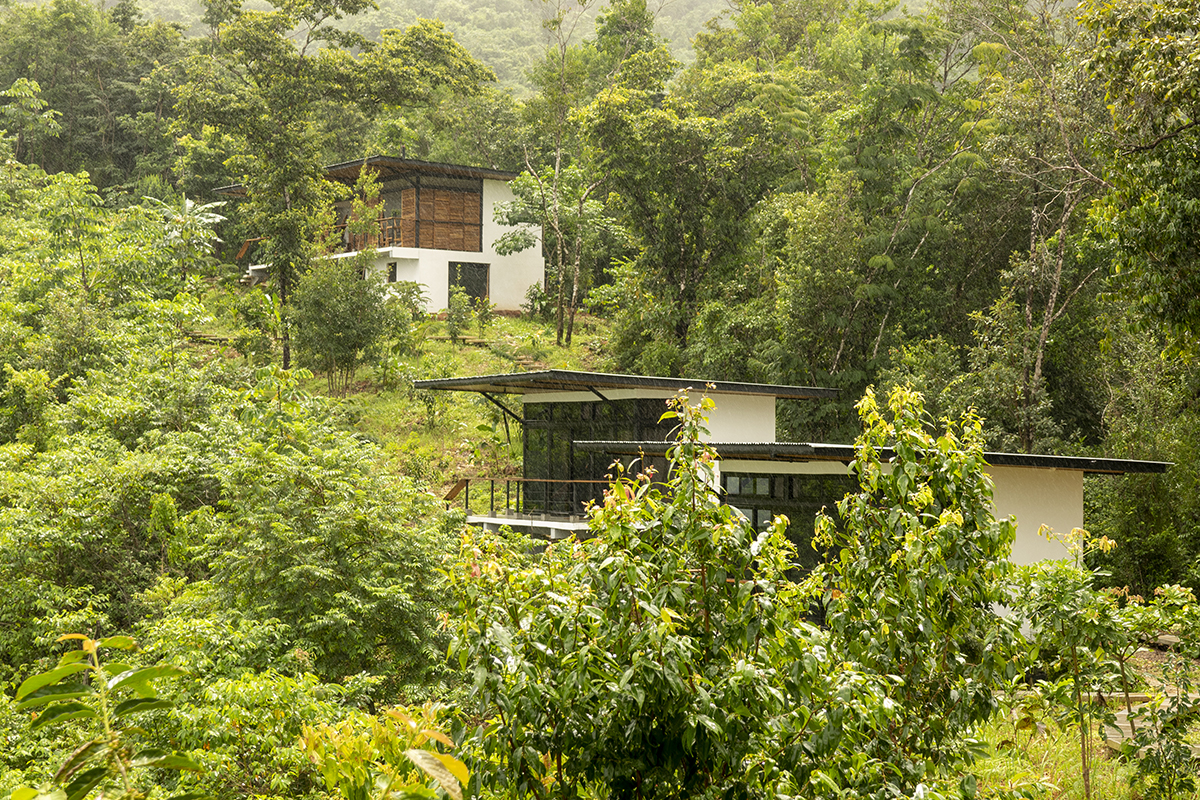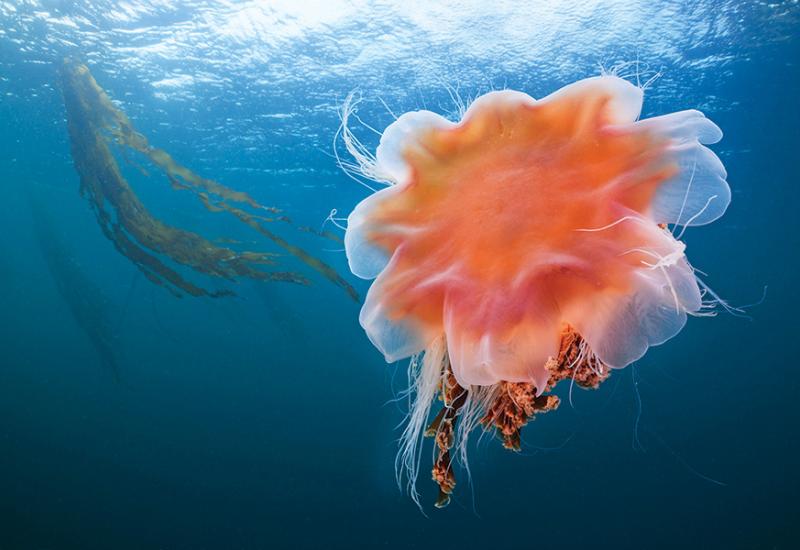Here’s Why a Dive Trip is the Perfect Family Vacation with Teenagers

Shutterstock.com/GoodFocusedCozumel is a wonderful diving destination for the whole family.
Forty feet under water just off the shores of the tiny Mexican island of Cozumel, our 13-year-old daughter stared down a 5-foot-long green Moray eel with a neck as thick as the Hulk’s. I should pull her away, I thought as it sneered at us through jagged teeth. But its unworldliness left me pinned in place.
It’d been 20 years since I’d gone scuba diving. Back then, my greatest fear had been a shark attack. Now, as I attempted to position myself between my daughter and this evil-looking prehistoric creature, I realized that sharks were the least of my worries. My goal on this trip had been to share space with our teens—but would my need to keep them safe end up driving them away?
Breathe, I told myself, as she swam from me, exasperated by my lack of trust.
Just breathe.
Making Up For Lost Time
My husband and I love traveling with our teens. They don’t always feel the same. Their friends are their world, and being ripped from them can cause even our sunniest to sulk.
Scuba diving, however, seemed like the perfect distraction from life back home. And Cozumel—along with the luxurious coral beds that lay just off its shore as part of the 700-mile Mesoamerican Reef—was the ideal place for our three teens and their cousin to complete their open-water PADI certification dives.
On our first dive, we practiced basic scuba skills in shallow waters while manta rays circled underneath. At the start of our second dive, I couldn’t shake my seasickness. But there was no way I was letting our teens sink towards the sandy sea floor without me. Although rare, bad things can happen fast underwater — things a reliable “buddy” can help you avoid.
I couldn’t shed my worry that coming of age during a pandemic hindered their ability to develop the innate control system required to accurately weigh risk. At a time when they should have been out pushing limits, the world had shut down around them, their only window into it online. Bombarded by confusing virus decisions, my husband and I had taken on the unnatural role of being their “buddy” on land, modifying their behaviors to protect them and vulnerable community members from Covid.
Now that the world was opening back up, I wanted them to freely and unguardedly explore it. Only I wasn't sure I wanted their first real risk-assessment test to occur 40-feet under.
So, as their self-proclaimed buddy, I staggered to the back of the boat and plunged flipper first into the blue-green waters. Kevin Alexander from By The Shore Scuba Instruction led us through the rocky arches of Palancar Gardens where a green sea turtle strode past the swaying ferns with confidence.
Suddenly, I had to vomit. If I did so into my regulator, would an involuntary abdominal contraction pull water back in? In a panic, I blindly made my way up to the surface just in time to vomit. Moments later, my daughter surfaced wide-eyed beside me.
“What happened?” she asked, before chiding me for surfacing in a boat channel.
“You can actually vomit into your regulator,” said Kevin, who had joined us at the surface.
I flushed, realizing I should have stayed behind. Our teens weren’t the only ones who lost out on milestones—with nowhere to go, they hadn’t led me in that painful dance that teaches you as a parent when it is time to let go.
Learning To Let Go
We stayed close to shore the next day, where our teens learned how to share air and tow each other to safety.
“Check your regulator first, and then ask your buddy to check theirs,” Kevin said (a good analogy for any relationship).

Courtesy ImageThe author's family during their dive certification trip to Cozumel.
Our last certification dive took us to Cathedral Wall where our teens zipped among crevices as if playing a thrilling game of hide and seek with fluorescent sea life. They gave a wide berth to a Caribbean Spider Lobster who stood wide-legged against a rock, desperately flailing its antennae like swords as if defending its turf.
When we surfaced, our characteristically tight-lipped teens gleefully shared what they’d seen.
“That octopus—”
“That nurse shark—”
Newly certified, our family signed up for a drift dive along the Santa Rosa Wall. An inky blue abyss lay on one side of us, a haunting reminder of what a small part of this universe we are. A warm current gently swept me alongside the multi-colored, sponge-covered grottoes as if on a slow-moving Disney boat ride. I knew not to trust it, as further from the wall, it could just as easily sweep me out to sea like an astronaut into space.
But I felt surprisingly at peace. Our teens’ brains functioned like giant databases, constantly inputting data from their surroundings and then harvesting it to stay safe. They held up their air gauge to ask their buddy for a reading, and pressed one finger into their arm for each 1,000 PSI. They flashed three fingers to remind each other to level off. Scuba diving had taught them a new way to reach for each other. Underwater, I could see that they had found buddies in each other.
Are you ready to step up, help save the ocean, and #LiveUnfiltered at the same time? Sign up for a PADI Open Water Diver course now.











